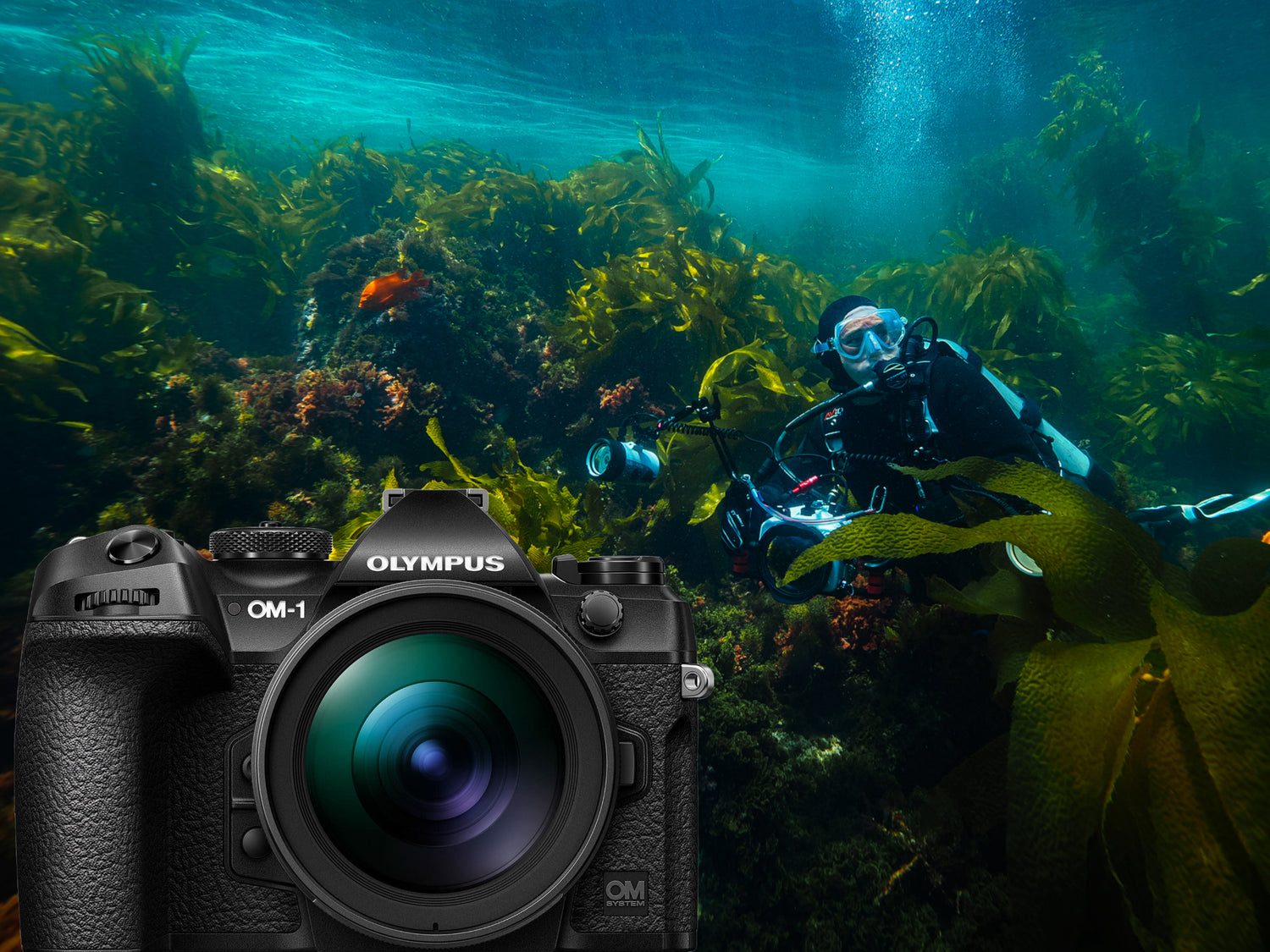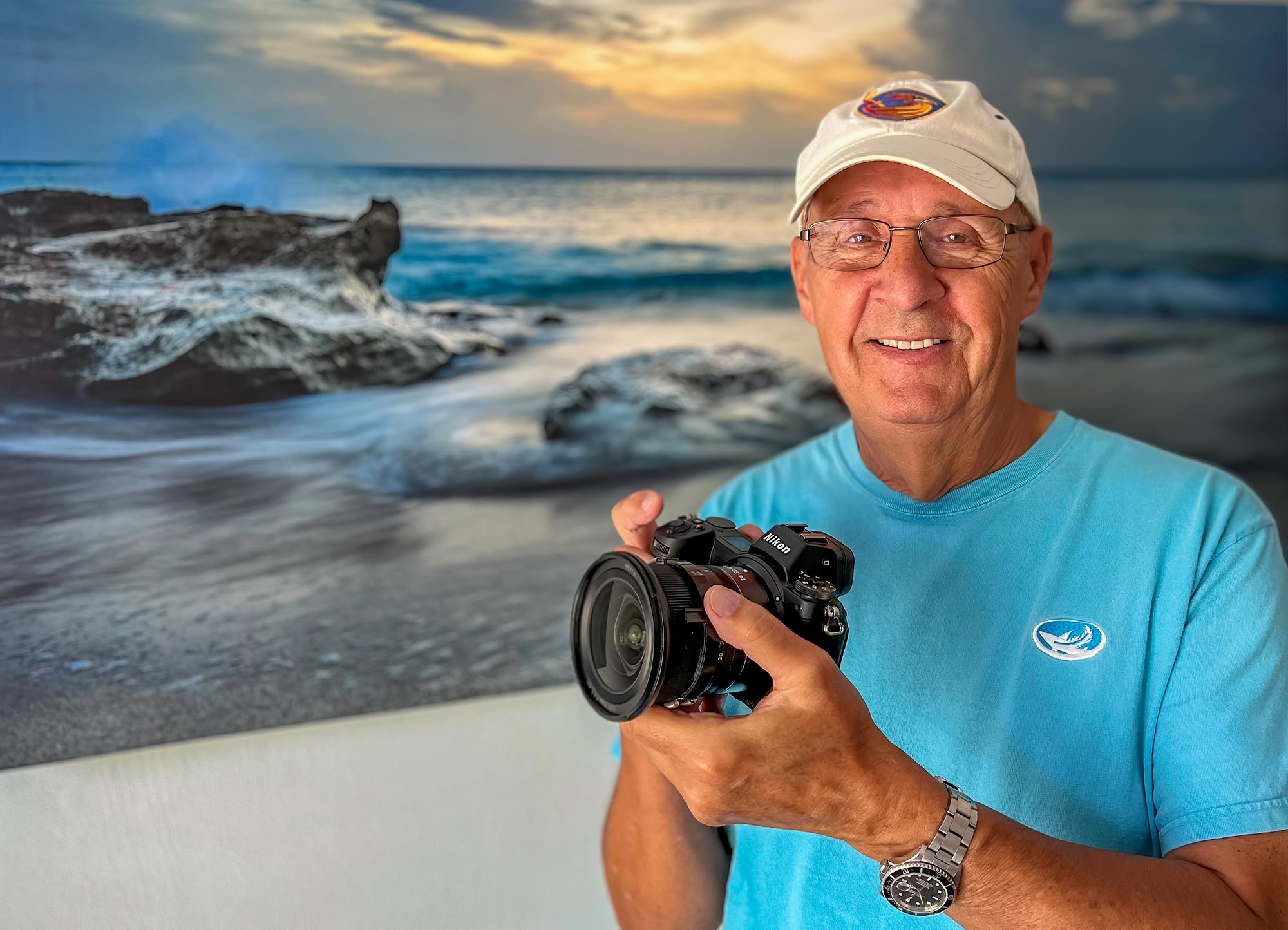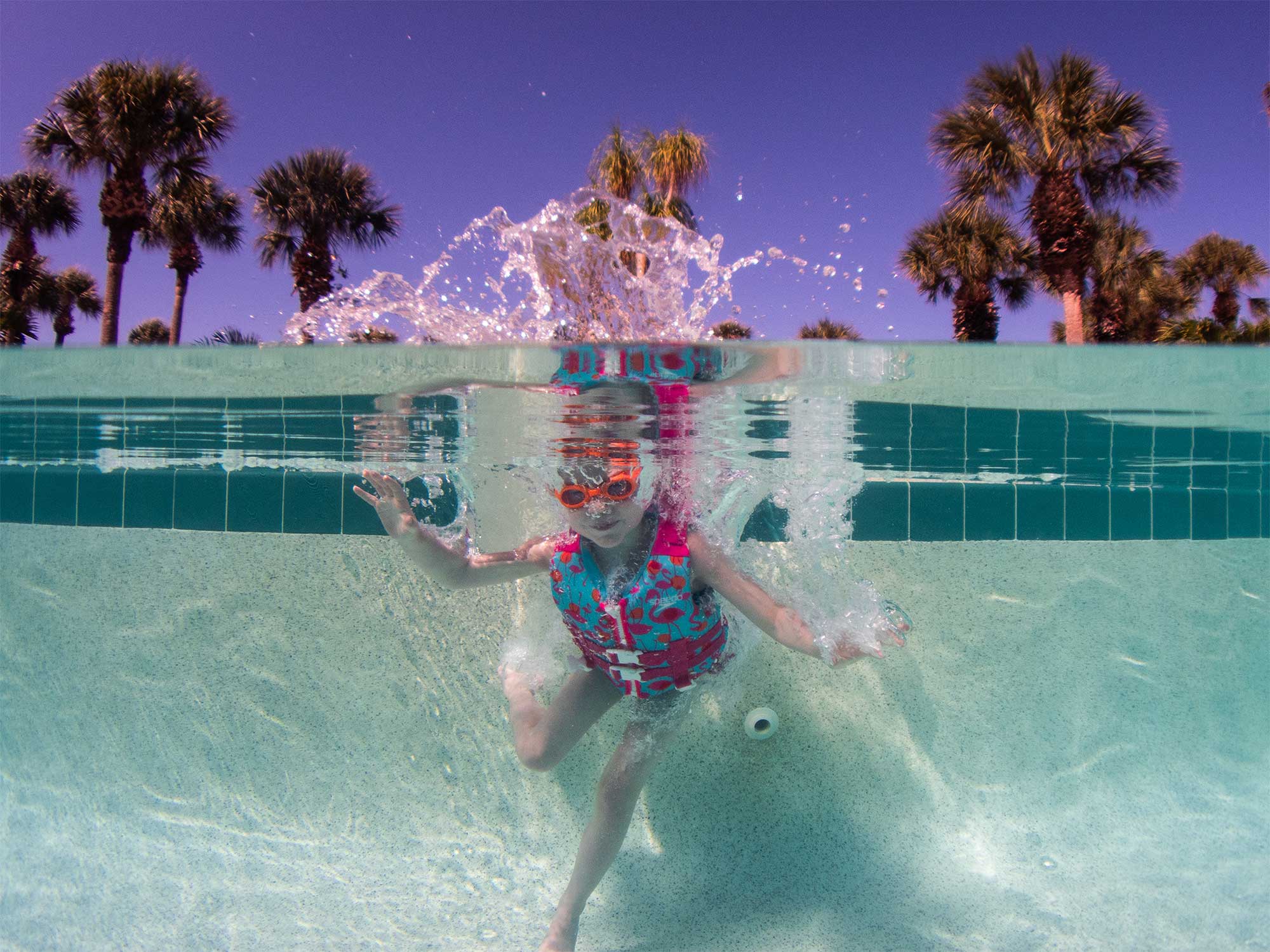By Jean Rydberg
Olympus shook the underwater world in 2020 when they announced a departure from producing imaging equipment. What actually occurred was a transition into a new Japanese brand OM System. The new company – OM Digital Solutions – has continued to produce the existing Olympus product line and is committed to releasing new models within the same engineering roadmap.
The first new model to come about is the OM-1, carrying the Olympus name on front just as the film camera of the same name did a half-century ago. Yes, we feel old to be talking about digital versions of cameras that are over 50 years old, but let’s get past that and get into the specifications.
The new OM-1 is one of the most highly anticipated “Olympus” models in a long time. Sticking with the Micro Four Thirds sensor size, it is capable of 20.4 megapixel still images and 4K/60p UHD video. If you are willing to shoot 1080p then frame rate can go as fast as a very respectable 240 fps. The camera also supports an interesting high-resolution mode which takes multiple sequential images and combines them in-body to create a high-resolution image up to 50 megapixels. Some additional testing is still necessary to determine whether this will be easy to take advantage of underwater but we can definitely see the utility in landscape and portrait photography.

Autofocus
A completely new sensor, faster processor, and higher resolution viewfinder take it up a notch from previous E-M1 model cameras. Olympus promises good autofocus capabilities with 5-axis in-body image stabilization and 1052 autofocus points. An enhanced subject detection autofocus system is better than the E-M1 X with a wide range of trackable subjects including birds and animals.
We found that auto-focus and subject tracking performed well even in the lower light levels under the kelp canopy off the coast of California’s Channel Islands. The ability to half-depress the shutter – or use back button focus – and accurately track a subject’s eye is a great advantage underwater.

f/4.5 • 1/160 • ISO 200 © 2022 Steve Miller
Flash
The OM-1 has no built-in flash so the 200DLM/B Underwater Housing comes standard with the gold-standard Ikelite bulkhead and manual flash hotshoe. Flash shooters have the opportunity to take advantage of camera-driven TTL strobe exposure by attaching an optional DL3 DS Link and optional TTL hotshoe. Flash sync speed is 1/250 which is on par with more high-end cameras and much faster than the 1/160 sync speed of the Sony a6600.

f/11 • 1/160 • ISO 200 © 2022 Steve Miller
Battery Life
If battery life is a primary concern then the OM-1 is a slightly better than average performer. With a CIPA battery life rating of 520 shots per charge, the OM-1 performs better than the brand’s OM-D E-M1 Mark III (420 shots per charge). But it’s out-done by pretty much every Sony model from the a6600 up. Keep in mind that the sophisticated electronic viewfinders (EVFs) on mirrorless cameras actually eat up more battery than when composing using live view on the larger LCD screen. All mirrorless are blown away by the compact DSLR Canon SL3 system which is rated at 1080 shots per charge whether using the optical viewfinder or rear LCD. “If you are a MFT lens user, the Olympus OM System OM-1 is a nice, albeit expensive, upgrade. In fact, after shooting the camera underwater, we think it's the best micro four thirds camera available for underwater photography.” – Nirupam Nigam, Underwater Photography Guide
The OM-1 camera’s rugged IP53 design doesn't mean you'll be taking it underwater without a housing, but it does give you a security blanket when shooting on the deck of the boat and on more adventurous shore excursions.

f/14 • 1/125 • ISO 200 © 2022 Steve Miller
Cost Comparison
The performance comes at a fairly steep price tag of $2,199.99US. While the OM-1 isn’t the most budget-friendly option on the surface, it does give Olympus shooters one of the best cameras to date for underwater imaging and video. Compared to similarly positioned Sony mirrorless cameras, the smaller hand grip and miniaturized micro four-thirds lens mount translate to big savings in travel size, weight, and cost of an underwater system. Once everything adds up, you could save almost $1000 (US MSRP) by going with the OM-1 system.
| OM System OM1 | Sony a7 IV | |
| Camera Body | $2,200 | $1,800 |
| Housing | $950 | $1,595 |
| Macro | 60mm Macro | 50mm Macro |
| $450 | $548 | |
| $250 Port | $600 Port | |
| Wide Angle | Olympus 12-40mm | Sony 16-35mm f/4 |
| $999 | $998 | |
| $350 Port | $645 Port | |
| Total | $5,199 | $6,186 |

This assumes you have no prior investment in ports or lenses. The OM-1 body accepts both Olympus and Panasonic micro four-thirds lenses and has a good range of wide angle, fisheye, and macro options at a variety of prices.
If you have already started out with a mirrorless or DSLR camera system, then the ability to carry your investment forward to a a Sony or Canon camera body could make more sense. You may also consider whether a move to full frame mirrorless and/or 8K may be in your future. If that’s the case, then it’s better to invest early in high-quality lenses and a housing with a larger diameter port system.
Conclusion
For underwater still shooters starting fresh or moving up from a compact camera and looking for a high-quality, compact underwater system then the OM-1 is an excellent choice. The simple interface and excellent autofocus performance make it a pleasure to shoot underwater. The compact micro four-thirds lens mount and compact body design make for a much smaller underwater rig than comparable Canon, Sony, or Nikon cameras.
If you already have some lenses and ports in your gear bag, then there may be a different option that’s a better fit for you. Want personalized advice? Email us with what you’re currently shooting, what type of photography you enjoy, and where you do most of your diving.
 Jean Rydberg, daughter of Ike Brigham, became President & CEO of Ikelite in 2006. Prior to that, she wisely pursued a degree in Astronomy & Astrophysics to prepare herself for the challenges of running a technology-driven manufacturing business with global distribution. Jean fully embraces the need to travel outside of her hometown of Indianapolis to experience good diving. She believes that any camera is capable of amazing results in the right hands, and anyone can become a great photographer given the right advice. When she's not working she's spending time with her husband, cats, and two daughters (though not necessarily in that order).
Jean Rydberg, daughter of Ike Brigham, became President & CEO of Ikelite in 2006. Prior to that, she wisely pursued a degree in Astronomy & Astrophysics to prepare herself for the challenges of running a technology-driven manufacturing business with global distribution. Jean fully embraces the need to travel outside of her hometown of Indianapolis to experience good diving. She believes that any camera is capable of amazing results in the right hands, and anyone can become a great photographer given the right advice. When she's not working she's spending time with her husband, cats, and two daughters (though not necessarily in that order).
Want the easy way to improve your underwater photography? Sign up for our weekly newsletter for articles and videos directly in your inbox every Friday:
Additional Reading
First Reactions to OM System (Olympus) OM-1 Underwater [VIDEO]
Diving and Visiting Catalina Island [VIDEO]
Kelp Forest Underwater Camera Settings and Technique
Getting it Sharp: Back Button Focus and Post Processing Workflow













